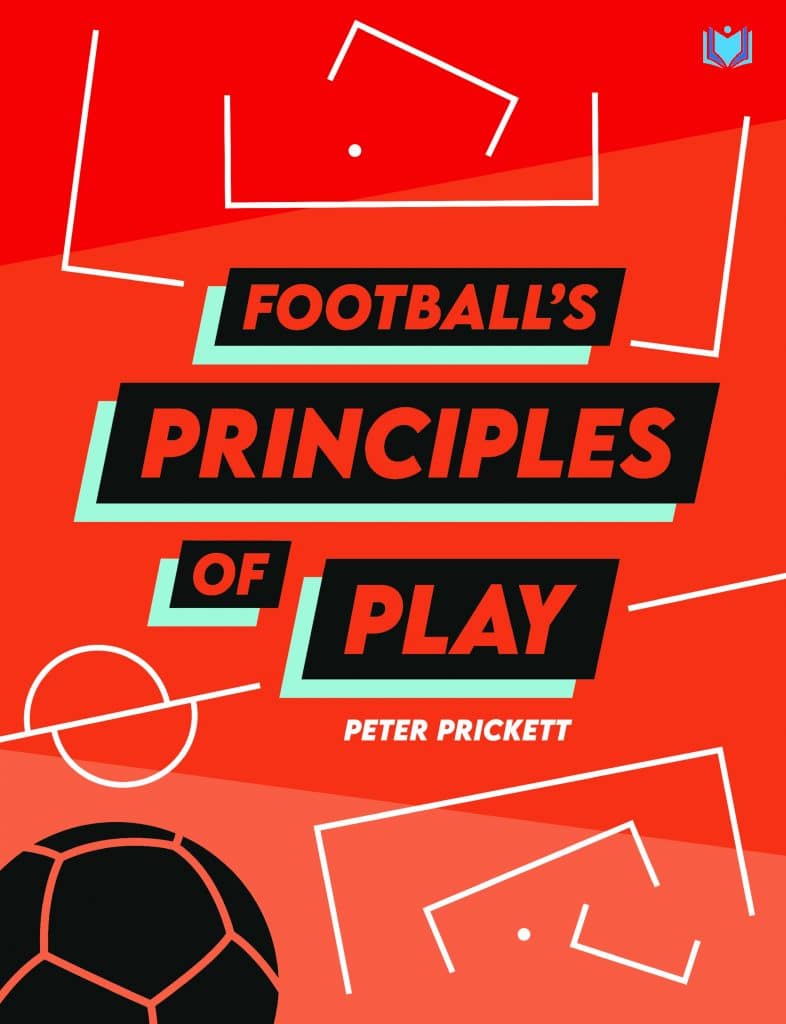An excerpt from Football’s Principles of Play by Peter Prickett.
Pressure/Pressing
Thus far, pressure and pressing have featured as a part of out-of-possession and transition principles. The amount of pressure that the player in-possession is placed under will influence the game to a huge degree.
It has been identified that the relationship between the player in-possession and the closest player who is out-of-possession represents a dyad, comprised of a constant relationship in which the defender is looking to control the distance, while the attacker is aiming to break the relationship, to change the distances.
The distance dictates the pressure. Too far away, and the player in-possession has enough time and space to play with freedom. Too close and the defender could be over-committing. Being close might suggest heavy pressure and a challenge, but a challenge may be just what the attacking dribbler desires in order to skip away.
Pressure on the ball thwarts easy passes, dribbles, and shots; it forces mistakes and impacts decision-making. Pressure makes play predictable, and prevents time and space. The optimal distance is generally enough pressure to threaten the ball, but not allow the attacker freedom.
For the team applying pressure, the opposition’s proximity to the goal they are defending plays a part. As the team in-possession get ever closer to the goal, the desired pressure will increase, with defenders aiming to prevent shots at the goal. In basketball, coaches will talk about not allowing any “uncontested shots”, as a shot under no pressure is far more likely to be converted. After all, this is the concept of a penalty kick.
The purpose of pressure can be to delay those who are in possession. This can be achieved by being close enough to the ball and orientating the body in such a way that going forward is not immediately possible.
Team strategy becomes relevant at this point regarding where a team chooses to apply the pressure. Some national governing bodies promote the idea of putting the opposition under intense pressure, suggesting that pressure is applied at all times and all over the pitch. At this juncture, the concepts of pressure and pressing begin to morph together.
When executed well, pressing in the opponent’s half can have the combined result of delaying the in-possession team’s ability to go forward, regaining the ball, and transitioning into a counter-attack. This sounds like an ideal strategy, but there will always be trade-offs. Committing players to pressing leaves space elsewhere on the pitch which can be exploited when a press fails. Pressing and counter-pressing are not universal principles for this reason, and not all successful teams will employ pressing at all times; they will need to apply enough to pressure to the ball to prevent the opposition going forward easily (eventually regaining possession themselves).
Battle to exploit and protect space
Invasion and territory games are also spatial-temporal games. Pressure denies players space and time; movement off the ball will help players to locate the time and space they require when in-possession.
If players dominate their one versus ones, they will alter the game landscape, moving from under pressure into freshly-created space. This is just one way to find and generate space. The principles of movement – width, depth, support and positional play – are used to create space in-possession that can then be exploited in order to fashion scoring opportunities. However, these principles can also work against the in-possession team, allowing space when possession turns over.
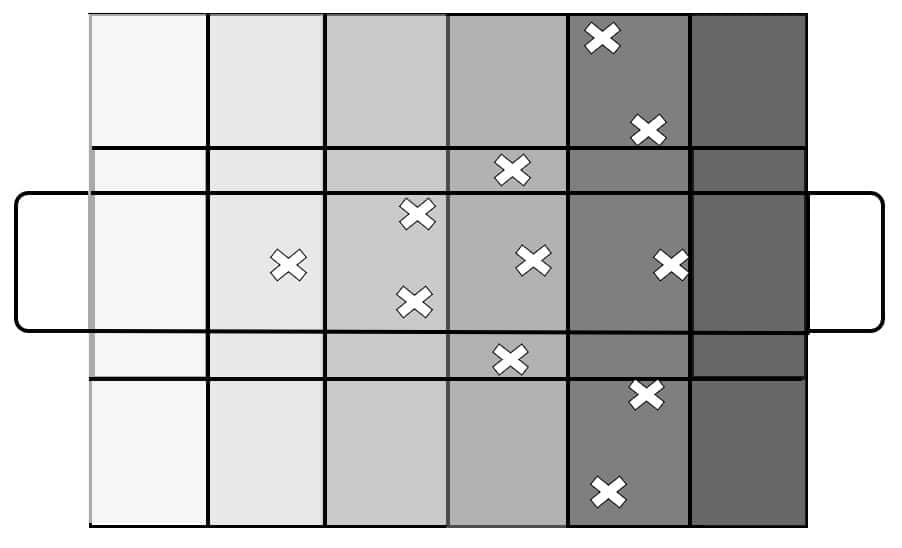
[Above Image] A dispersed in-possession team shape, with few central spaces that can be exploited if the ball is turned over. The three players positioned immediately in front of the two central defenders mean that layers are already in place.
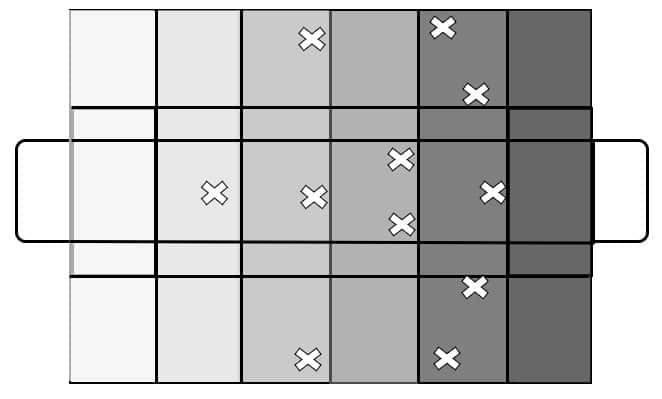
[Above Image] A dispersed in-possession team shape with large spaces that can be exploited if the ball is turned over. The large gaps between the defenders in the channels can be easily exploited by forwards.
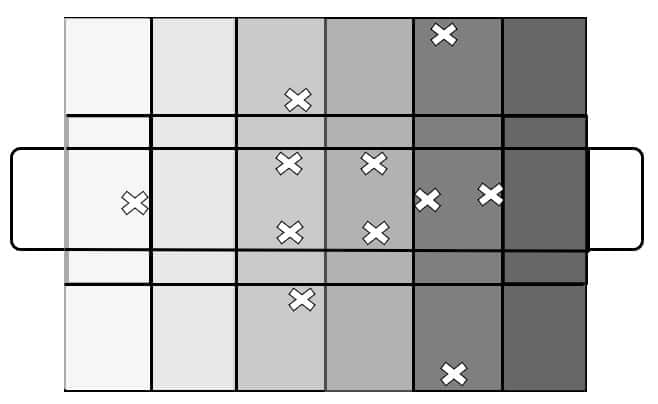
[Above Image] A somewhat dispersed in-possession team shape, with very few spaces that can be exploited if the ball is turned over.
Players of differing attributes will require different amounts of space to aid creation. A world-class attacker may only need a metre or two, while a young, developing footballer might require five metres. Teams will therefore seek to limit the space available to play in, by using the out-of-possession principles. The pressure and pressing principles seek to compact the space in the immediate vicinity of the ball. German football has been the epicentre of high-pressure football in recent times. It has been common to see images of a whole team (bar the goalkeeper) concentrated within a quarter of the pitch.
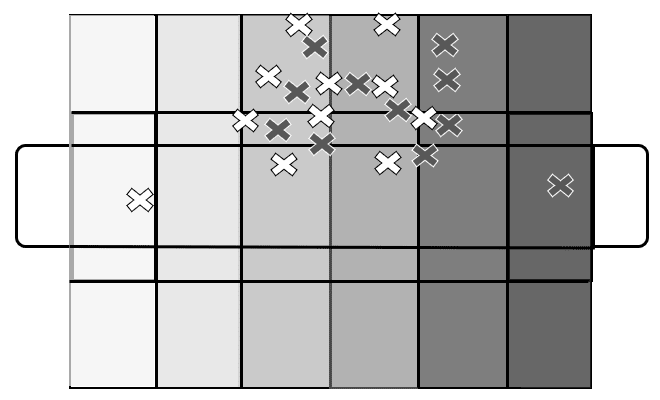
[Above Image] This was witnessed in the Bundesliga game between Bayer Leverkusen and Freiberg in 2015.
Splitting the pitch into zones enables coaches to develop both an offensive and defensive focus in key areas. In doing so, other spaces open up – particularly behind the defensive line – but these areas can be covered by the offside law and the use of a “sweeper-keeper” who is positioned to mop up long passes into the available space.
Space can also be denied by compaction and layering, especially when prioritising the spaces aligned centrally with the goal. The battle for time and space is most important in the areas that in-possession teams seek to penetrate into. Areas of less importance may be easier to occupy if the out-of-possession team have chosen to leave them open.
A further game concept that influences the battle for space is marking. Traditionally, marking is categorised as man marking or zonal marking. Nowadays, it is most common for teams to use zonal marking with some elements of man-marking. Defenders become responsible for specific areas of the pitch or specific players. The smaller the area a defending player is responsible for, the more likely it is that the in-possession player will struggle to find space. When a team moves cohesively, when out-of-possession, the zones will remain tight.
*

